
Lifestraw Go Series Water Bottle Review
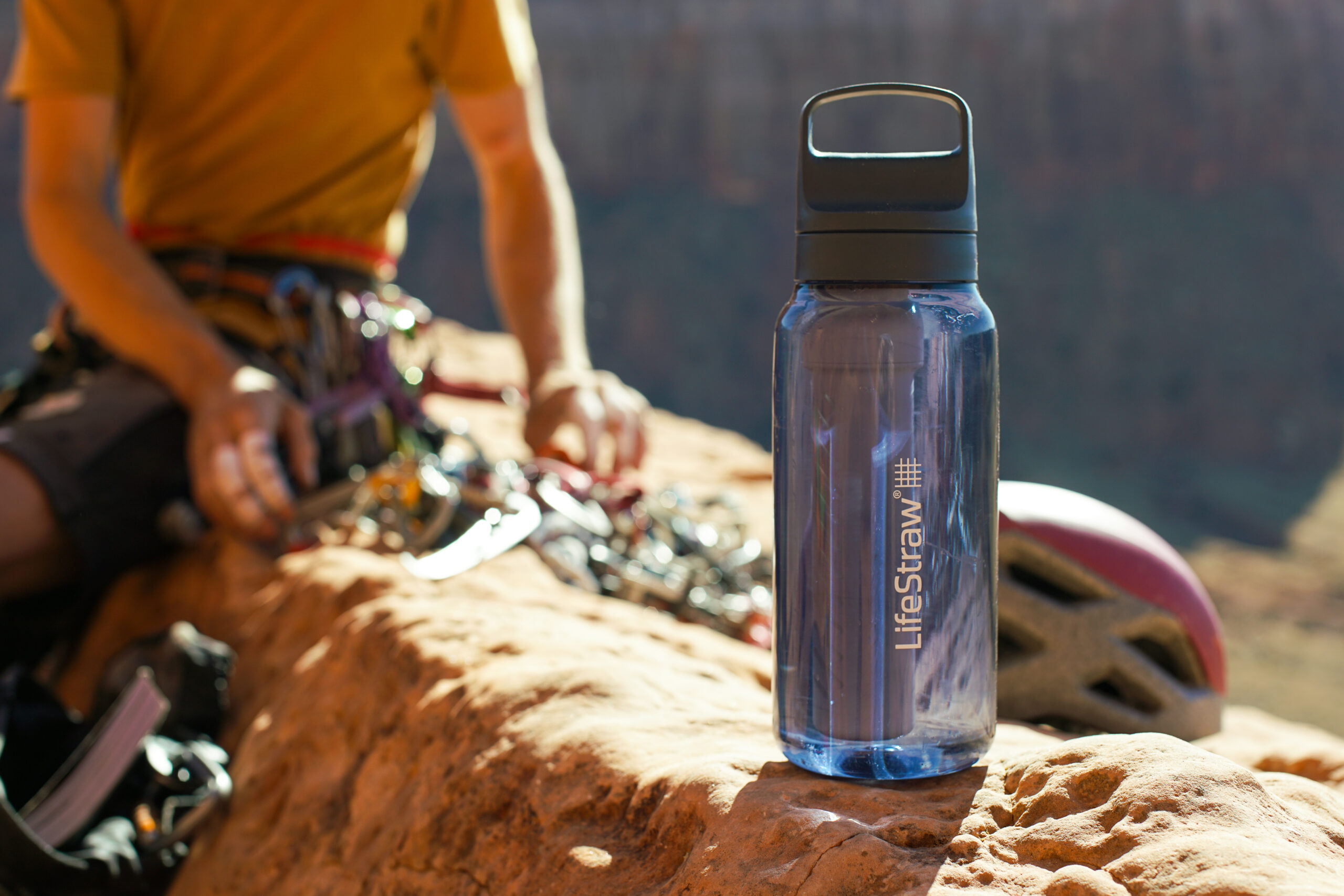
Bottom Line
The LifeStraw Go Series bottle features a built-in filter that ensures your water is safe and clean in the front country and backcountry. We filled the bottle with water sourced from gas station taps and silty creeks, and we felt confident in the bottle’s ability to provide safe and clean hydration. The water tasted good and appeared free from grit and harder-to-see impurities.
One of our favorite aspects of the LifeStraw is its convenient filtration – simply fill the bottle and start drinking. With no assembly or wait times, the Go provides immediate, clean water access. The larger bottle can be tough to fit in a fully loaded pack, but the one-liter capacity means you won’t have to stop too often for a refill. For simple hydration uses, you’ll be better off with another model from our best water bottles guide. For those traveling abroad, into the backcountry, or anywhere that limits access to clean water, the LifeStraw Go provides comprehensive filtration that’s convenient, portable, and stress-free.
How We Tested
Gear analyst Marion Tucker researched 35 water bottles and tested the top 13 in the field while hiking and climbing in Southern Utah. She conducted drop tests to evaluate their durability and ranked each bottle’s ergonomics, insulation, weight, and features after side-by-side comparisons.
Quick Specs
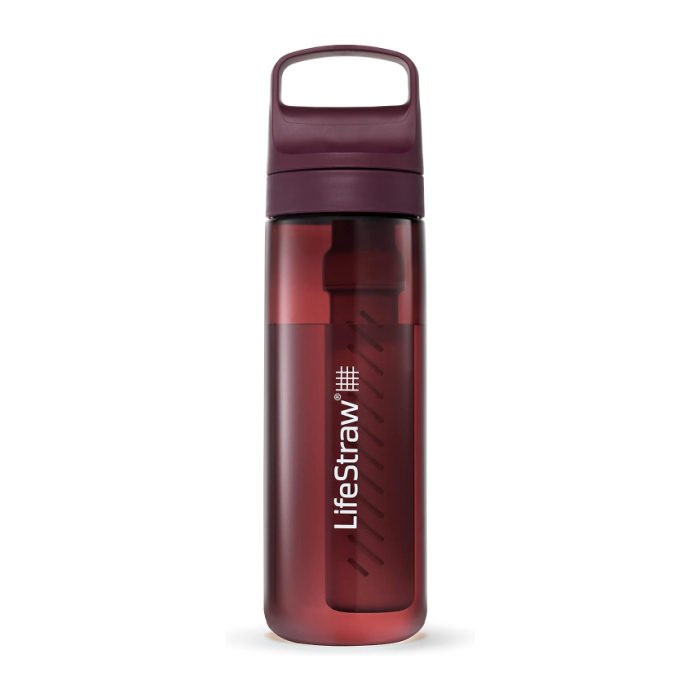
LifeStraw Go SERIES
Best Budget-Friendly Filter Water Bottle
CleverHiker Rating:
4.1/5.0
Price:
$45
Weight:
9 oz.
Insulated:
No
Pros
- Durable
- Convenient carry clip
- Replaceable filter
- Light enough for backpacking
- Fits in cup holders
Cons
- Hard to tell when the filter is no longer effective
- Expensive
- Can’t be used with hydration mixes
Durability
Though plastic doesn’t compare with stainless steel for durability, the BPA-free plastic of the LifeStraw Go doesn’t lack sturdiness.
We tested the durability of the LifeStraw through a series of fall tests while exploring the area around Canyonlands National Park in Utah. We dropped the bottle from varying heights onto sandy trails and jagged talus. Even when dropped onto harder surfaces, the bottle sustained no damage. The main body and handle were marred by just a few deep scratches.
Any damage to the filter would strip the LifeStraw of its primary function. We were pleasantly surprised to find the filter remained firmly mounted in the bottle’s lid and displayed no impact from the force of the falls.
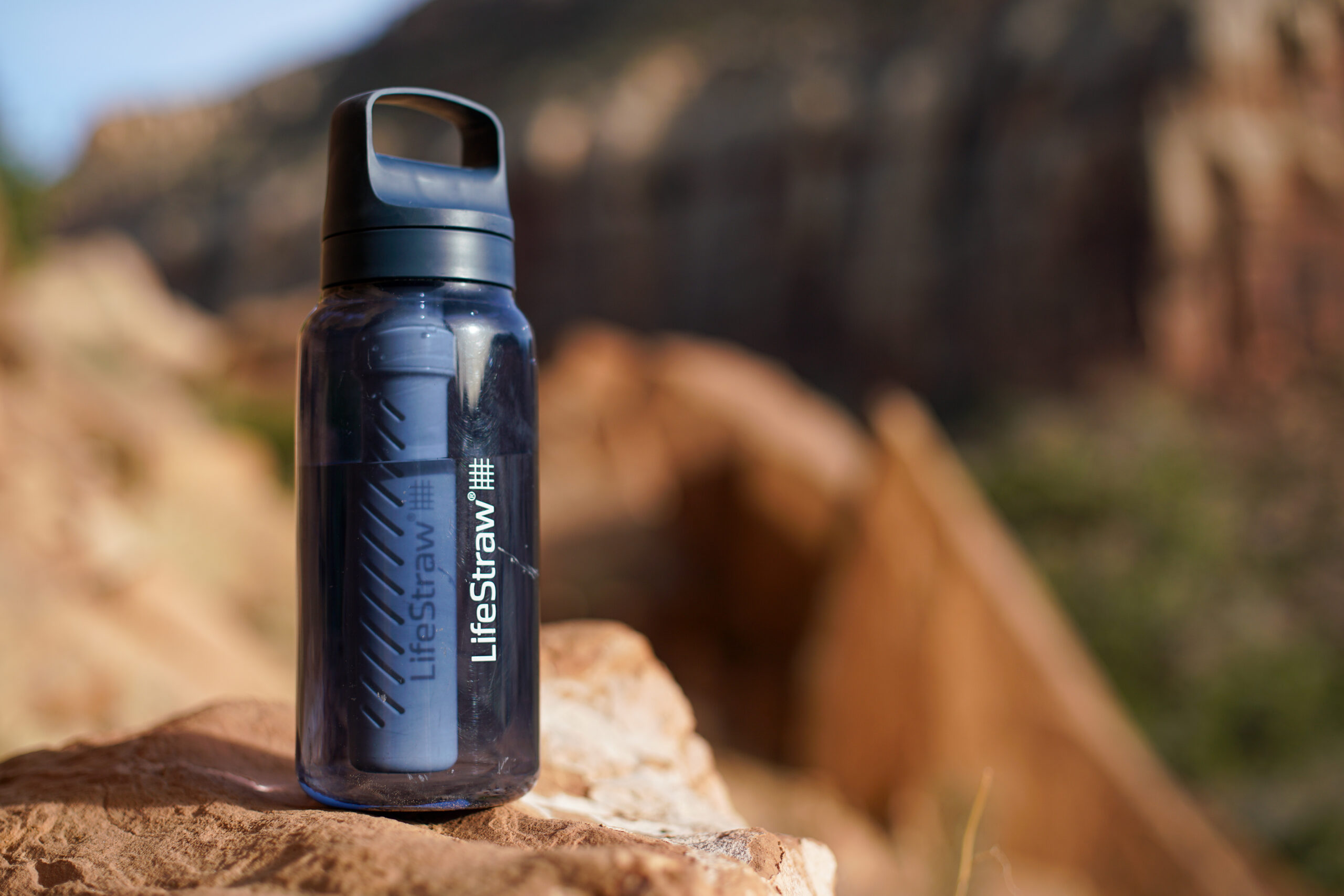
Ergonomics
With a 1L capacity, the LifeStraw Go is a higher volume bottle, meaning you have more water available to keep you hydrated for longer. However, its larger capacity means its bigger and wider profile requires more space to stuff into a fully loaded pack. We didn’t have any issue fitting it into our backpack pocket, but it doesn’t fit into a cup holder.
The entire lid of the Go can twist off for wide mouth access to the bottle. This is especially useful when filling the bottle outside. Water sources like a river or stream can be uneven and varied in their flow. The wide mouth provides a big opening for fast filling, no matter the source.
The LifeStraw’s design has its quirks. Water passes through the filter as you sip through a narrow rubber mouthpiece. Drinking is slightly slower than from the average bottle – some pull is required to suck water up through the filter.
We also experienced some issues with pressurization when opening the bottle to drink. When we removed the lid covering the mouthpiece, water had a tendency to spurt up through the mouthpiece and leak everywhere. Simply taking a sip and bringing the water level down stopped the spurting, but it happened consistently whenever the bottle was freshly filled.
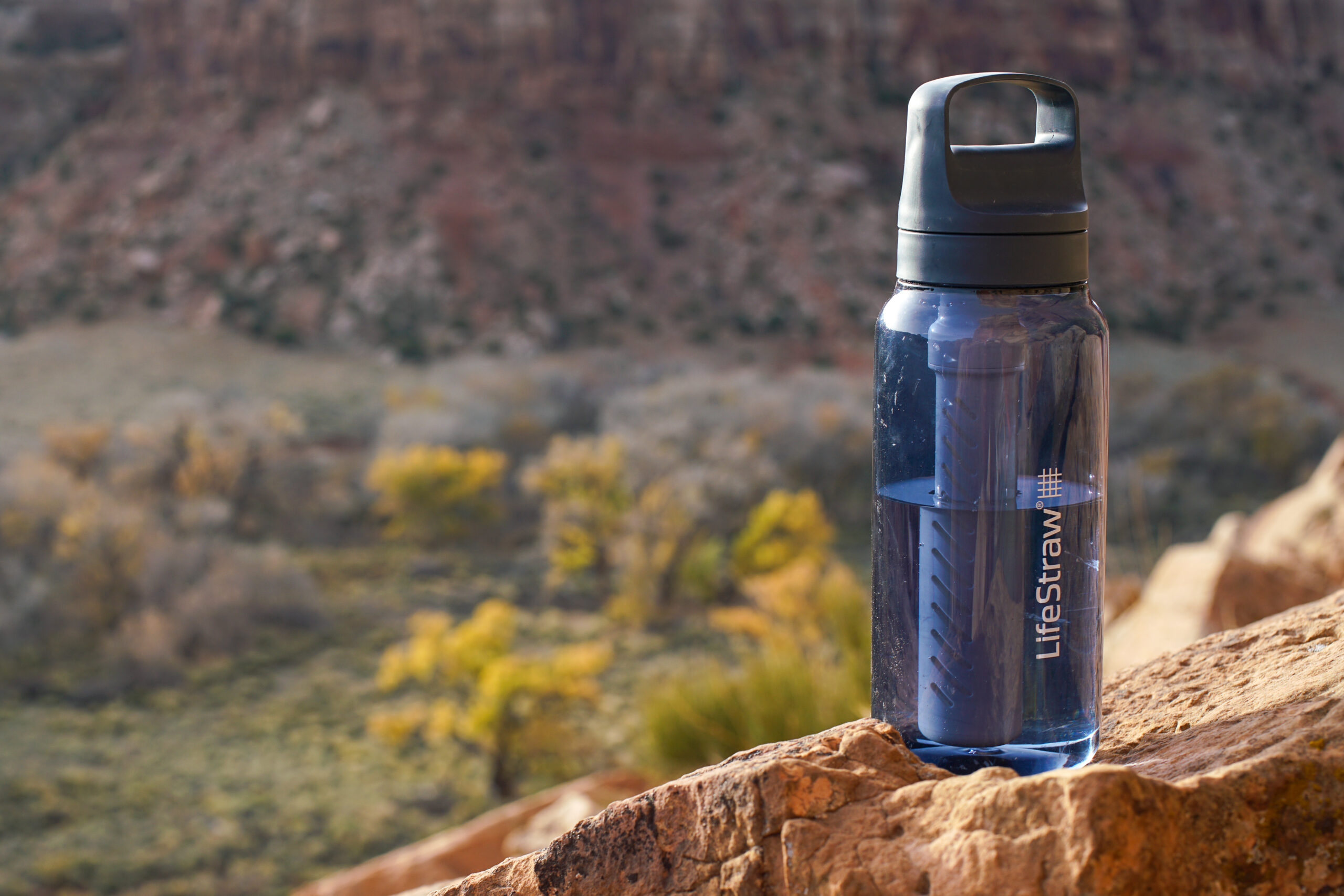
Insulation
The LifeStraw is not insulated, so its single-layer plastic build does not offer any temperature regulation for its liquid contents. Despite its lack of insulation, we still monitored the bottle to see how the temperature of our drink changed over time. Starting the day with the bottle fully filled with cold water, it took just over two hours sitting in direct sun for our water to become lukewarm. We also conducted this test with ice. The ice dwindled and finally melted completely in under an hour.
Though we did not explore it in our testing, LifeStraw also makes an Insulated Stainless Steel version of the Go for use with cold liquids only. That insulated model could be a good fit for those looking to reduce their plastic consumption while drinking cold, filtered water.
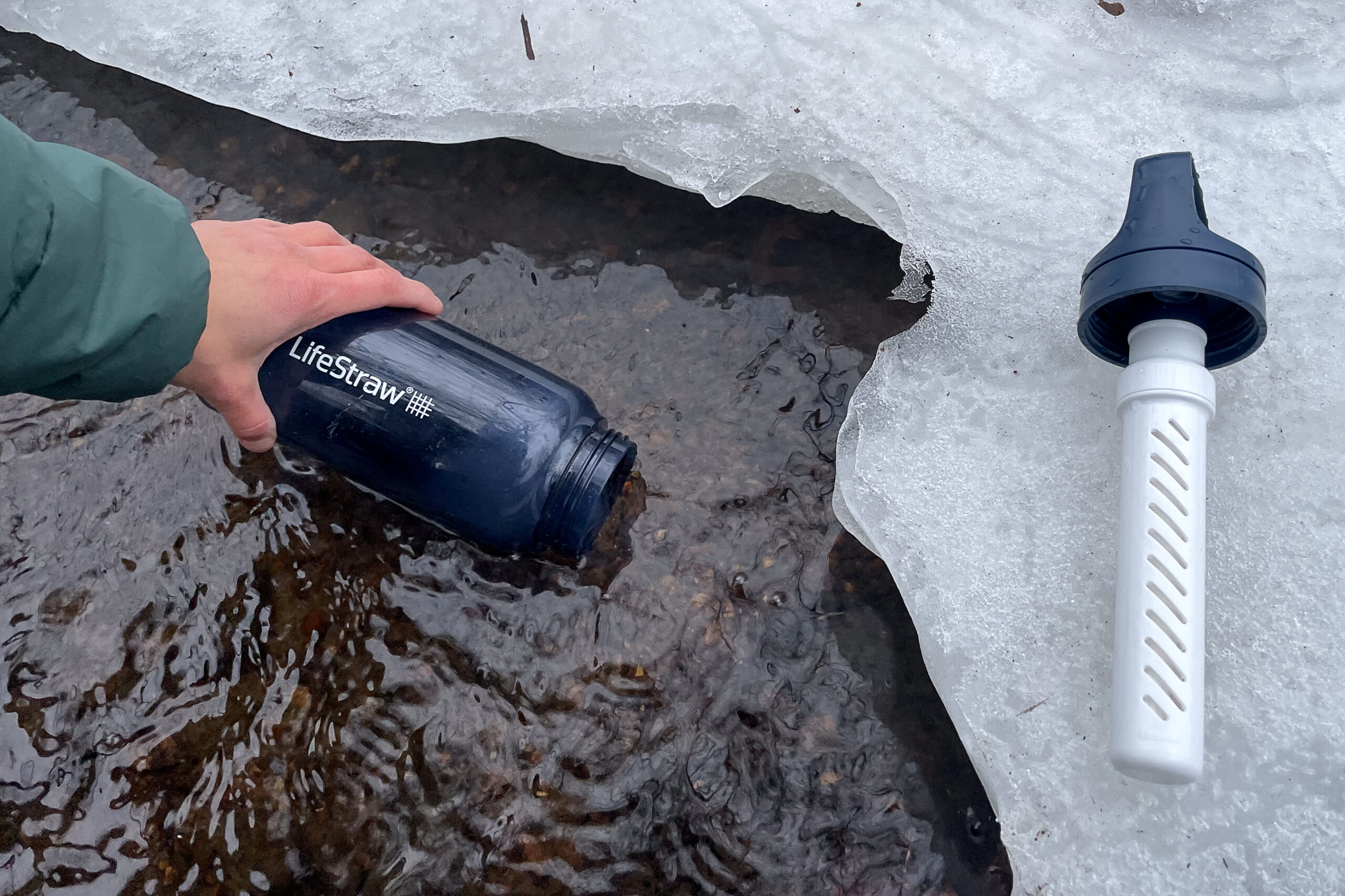
Weight
Although it’s not the lightest bottle we tested and reviewed, the LifeStraw caught our attention for minimizing ounces while offering effective filtration. At 9.45 ounces the LifeStraw Go is surprisingly light for a bottle that not only holds water but also filters it.
LifeStraw’s integrated filtration saves the weight of carrying an entirely separate filtration system. The manageable weight and filtration capability make it particularly well-suited for backpacking usage. It’s still nowhere near ultralight status. For a combination of bottle and filter, however, the weight seems justified.
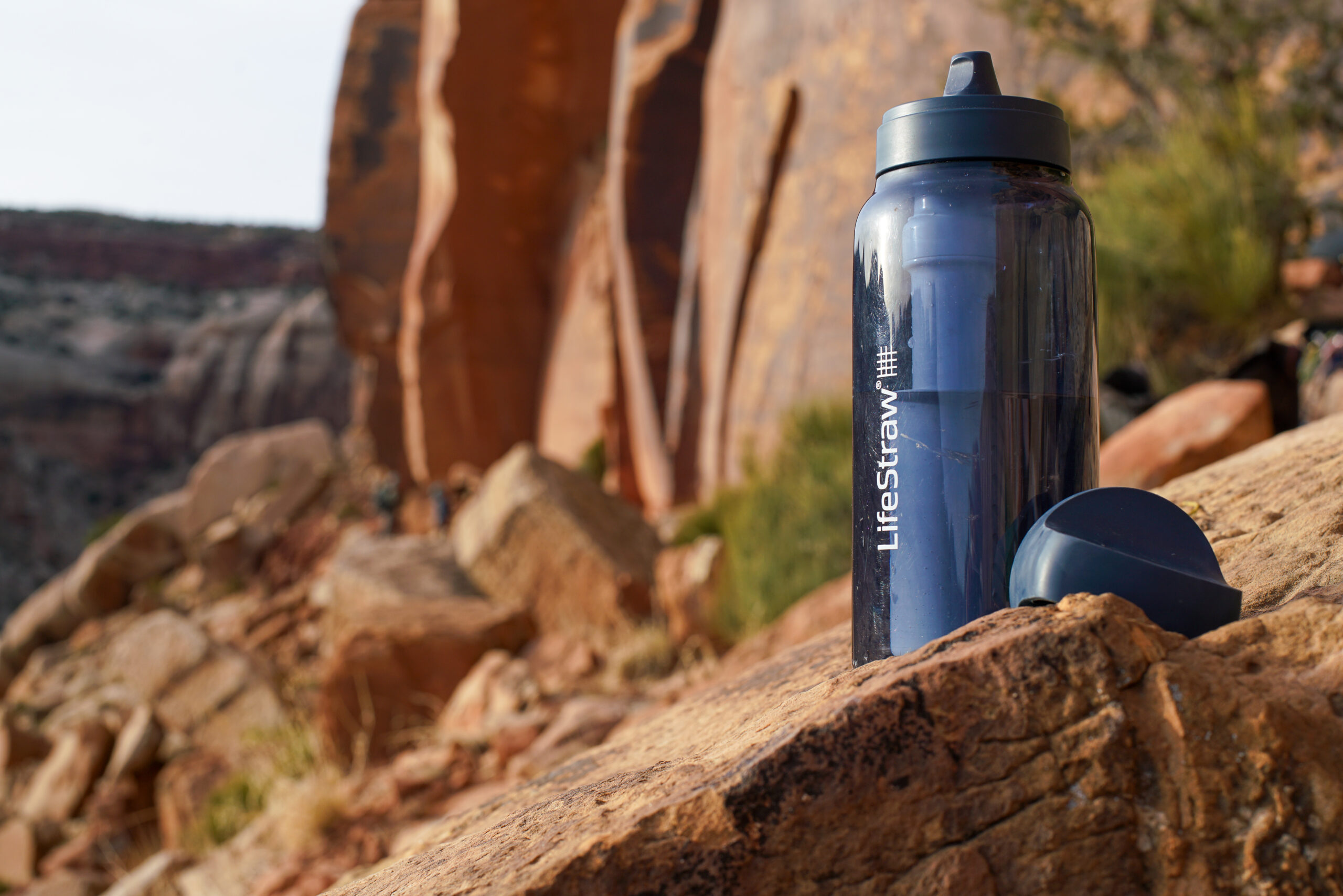
Features
The LifeStraw’s primary feature is its convenient, built-in water filter. The Go’s filter is securely attached to the lid and connects to the straw mouthpiece. Simply sip and you’re drinking clean water.
The bottle features a two-stage filtration system: a Membrane Microfilter that removes bacteria, parasites, microplastics, sand, and dirt and a Carbon Filter that reduces chlorine, odors, and organic chemical matter. Both stages are replaceable. However, replacement times vary between filters and can be difficult to track.
A downfall of LifeStraw’s filtration method is that it prevents the use of hydration mixes. However, it does improve the taste of water, making it an option for camping trips and funky-flavored tap water.
In the arena of aesthetic features, the LifeStraw comes in a variety of colors as well as 22 ounce and 1L sizes. The previously mentioned stainless steel version of the Go offers even more color choices and 18 ounce, 24 ounce, and 1L sizes.
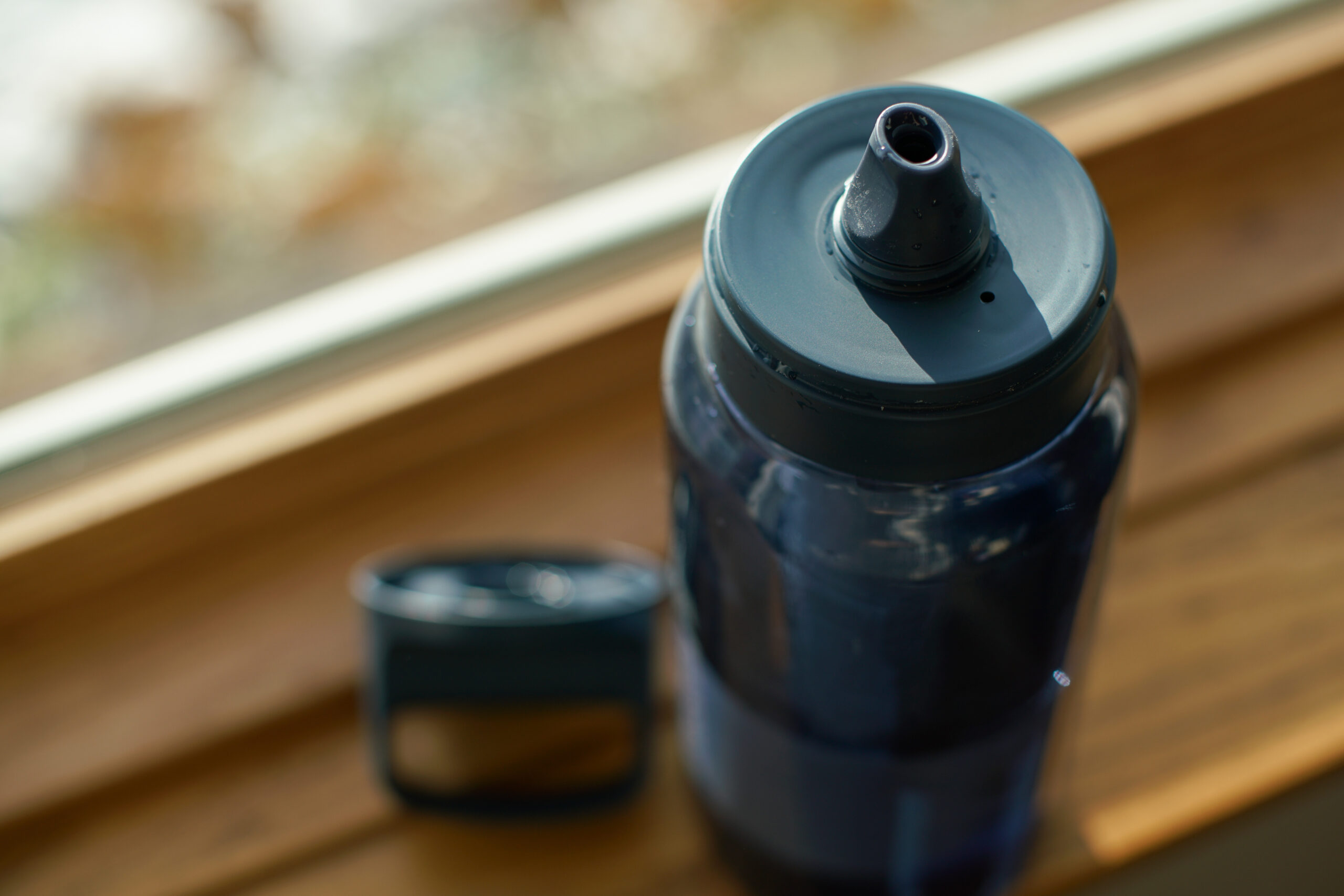
Should You Buy the LIfeStraw Go Series Water Bottle?
With the LifeStraw, you are paying for its defining feature: streamlined and simple water purification. The Go’s filtration method is effortless and worry-free – it’s both simple to use and removes the nastier elements lurking in water. Plus, its built-in filtration saves you the weight and bulk of carrying both a water bottle and filtration system. If water filtration isn’t a priority, the LifeStraw Go’s other features aren’t remarkable enough to make the bottle worth its more expensive cost. Plastic, uninsulated, and bulky, the LifeStraw Go falls short of other water bottles we recommend for basic hydration. However, this filtered water bottle is a great choice for international travel, areas with bad tap water, and backcountry backpacking trips.
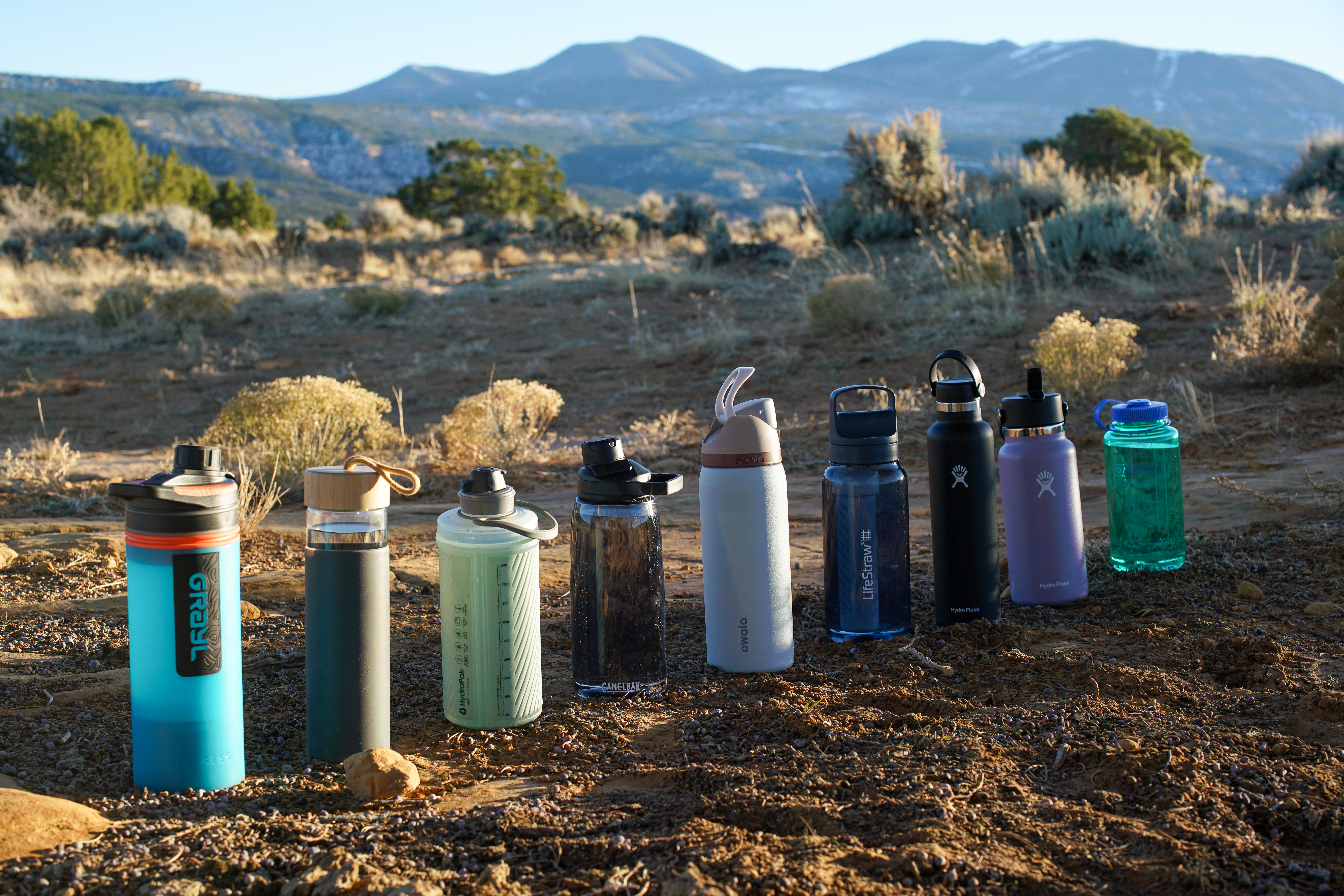
What Other Water Bottles Should You Consider?
For a full list of recommendations, check out our guide to the best water bottles.
Grayl GeoPress Review: The GeoPress provides the most intensive water purification of any filtration capable bottle available, using an innovative press method to produce clean, good tasting water that also enables the use of hydration mixes.
HydraPak Flux Review: The HydraPak is a flexible soft shell bottle that’s ultralight and durable. Paired with a compatible filter lid, the HydraPak becomes the ultimate lightweight and reusable hydration system for backcountry water purification.
Nalgene Wide Mouth Review: If filtration isn’t a priority, look no further than the Nalgene Wide Mouth for remote adventures. This classic water bottle is built to withstand the most extreme conditions and comes at an extremely low cost.
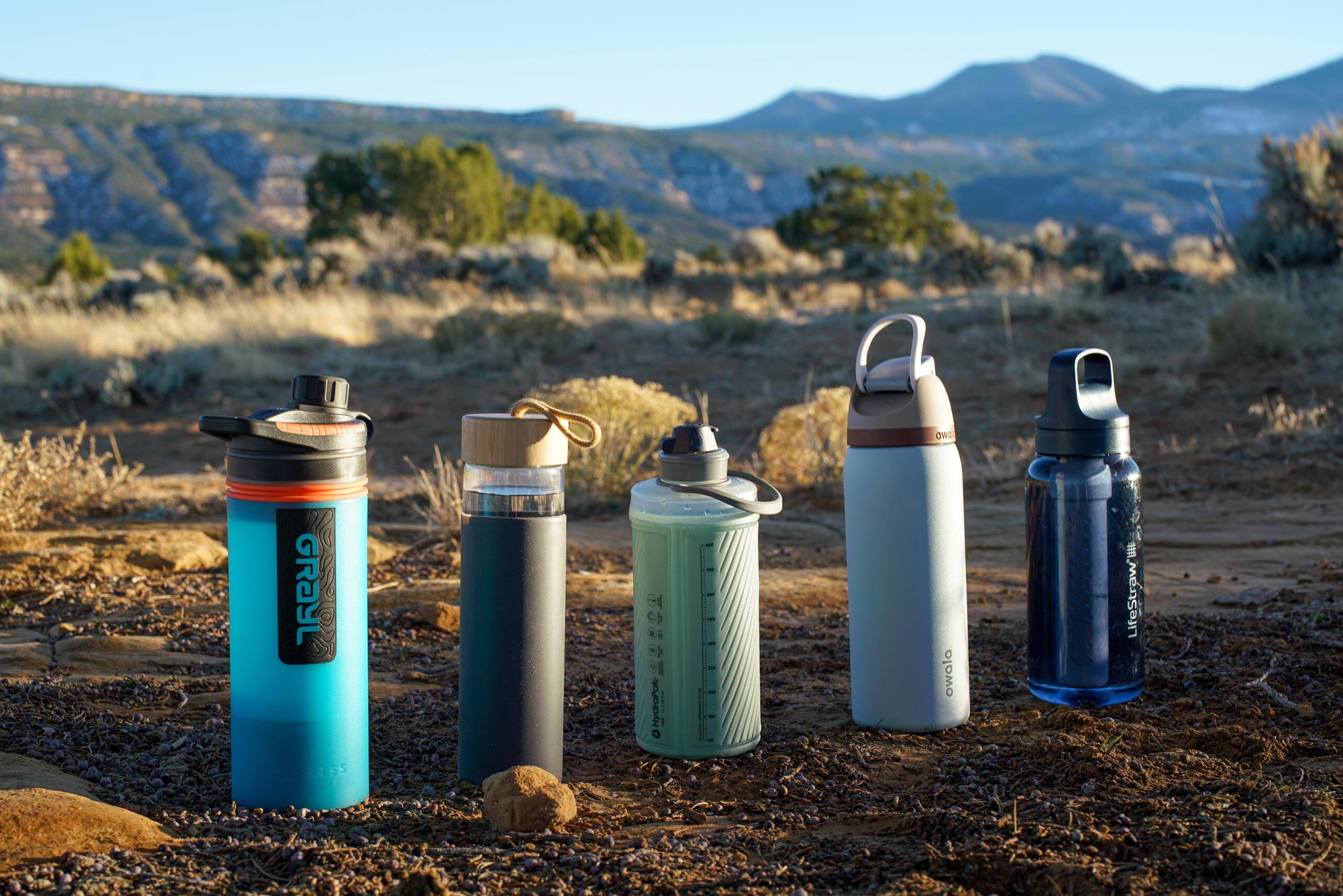
The post Lifestraw Go Series Water Bottle Review appeared first on CleverHiker.


